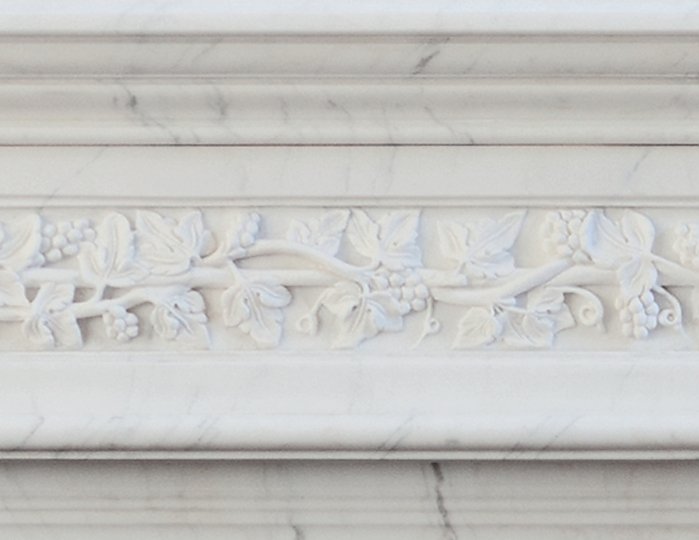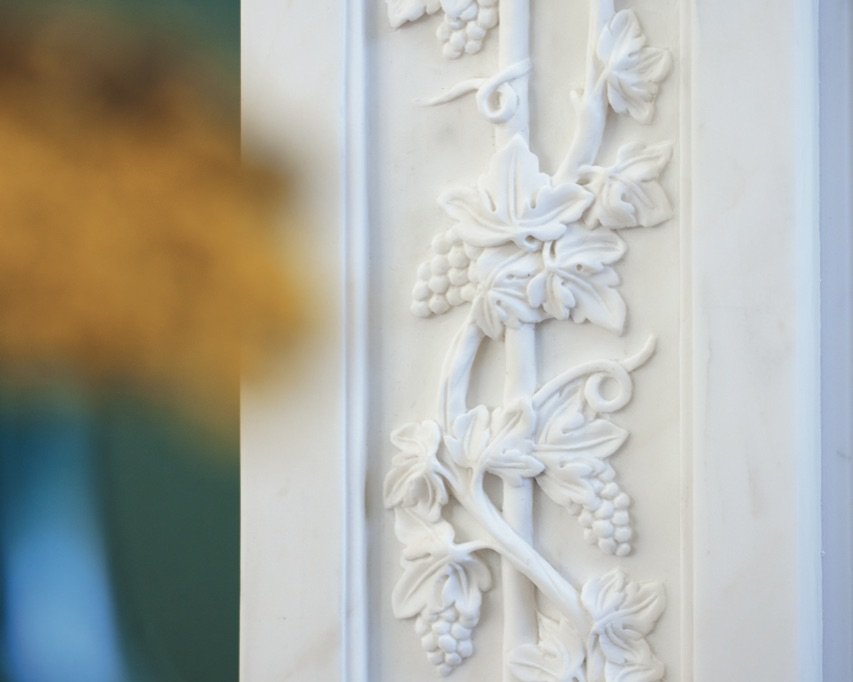 Image 1 of 3
Image 1 of 3

 Image 2 of 3
Image 2 of 3

 Image 3 of 3
Image 3 of 3




Dining Room
Finely detailed vines bearing clusters of ripe grapes clamber up the jambs and across the frieze of the Dining Room chimneypiece. Expertly hand-carved in Imperial white marble, they are shown here in natural harmony with the elaborate shape, relief patters and tendril-like scrolls of our Dorchester fire basket. The original from which this chimneypiece derives its beauty was sculptured by John Bingley and has its home in the north wing of Kenwood House, added by architect George Saunders in the 1790's. French-inspired, it is a significant departure, both in theme and proportions, from the neoclassical aesthetic prevalent in most of the house. The exuberant carving of the piece has to be seen to be fully appreciated.
Finely detailed vines bearing clusters of ripe grapes clamber up the jambs and across the frieze of the Dining Room chimneypiece. Expertly hand-carved in Imperial white marble, they are shown here in natural harmony with the elaborate shape, relief patters and tendril-like scrolls of our Dorchester fire basket. The original from which this chimneypiece derives its beauty was sculptured by John Bingley and has its home in the north wing of Kenwood House, added by architect George Saunders in the 1790's. French-inspired, it is a significant departure, both in theme and proportions, from the neoclassical aesthetic prevalent in most of the house. The exuberant carving of the piece has to be seen to be fully appreciated.
Finely detailed vines bearing clusters of ripe grapes clamber up the jambs and across the frieze of the Dining Room chimneypiece. Expertly hand-carved in Imperial white marble, they are shown here in natural harmony with the elaborate shape, relief patters and tendril-like scrolls of our Dorchester fire basket. The original from which this chimneypiece derives its beauty was sculptured by John Bingley and has its home in the north wing of Kenwood House, added by architect George Saunders in the 1790's. French-inspired, it is a significant departure, both in theme and proportions, from the neoclassical aesthetic prevalent in most of the house. The exuberant carving of the piece has to be seen to be fully appreciated.

